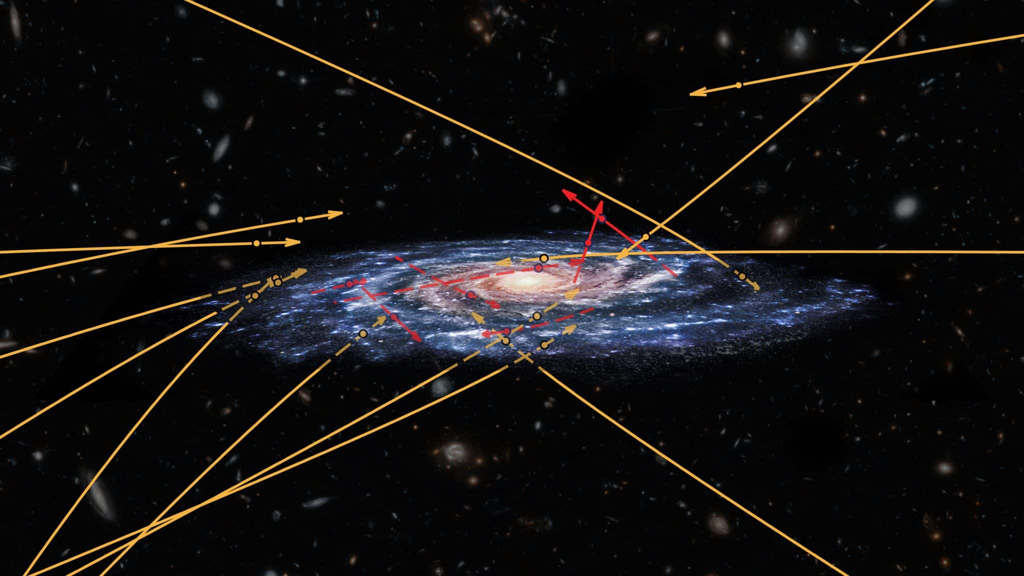Signs of extraterrestrial activity have been detected in hyper-velocity stars.
As the Sun moves calmly around the center of our Galaxy, it, along with all its planets, travels at approximately 240 kilometers per second — this is the most typical speed for stars in the Milky Way. Naturally, at the galactic center, they move much faster due to the gravitational pull of a black hole with a mass of four million Suns.
However, in our cosmic metropolis, there are stars located far from the center or even entirely outside the galactic disk, racing away at "turbo speeds." For example, the very first of these discovered stars, SDSS J090745.0+024507, is situated 230,000 light-years away from us and is flying there at a speed of approximately 800 kilometers per second or even more. It’s worth mentioning that the diameter of the Milky Way is about a hundred thousand light-years.
Among these cosmic racers, there are those that are fleeing from the Galaxy, known as "runaway stars." Conversely, some are speeding towards us from intergalactic space. Astronomers suspect that they were once ejected from their galaxy by its own central black hole, which imparted an immense gravitational acceleration to them. Regarding the "runaway" stars, there is a theory that they originate from binary star systems, with their speed being a result of a supernova explosion at the moment of their companion’s demise.

Nevertheless, some scientists are led to consider these unusual stars in relation to extraterrestrial civilizations. They believe that, in theory, a technologically advanced society could move along with its planet and entire system. This possibility was explained in a recent article (available on the preprint server arXiv.org) by researcher Clément Vidal from the Free University of Brussels.
The scientist drew attention to some intriguing binary star systems. They consist of a rapidly spinning neutron star and a much less massive companion. The "partners" are so close to each other that the pulsar pulls material from the second star and bombards it with a powerful stellar wind, leaving a trail of blown-off plasma behind the victim. Astronomers refer to such brutal examples as spider pulsars. If the victim has a mass less than 70 percent of the Sun's, the neutron star that is "devouring" it is called a "black widow."
These violent spectacles intrigued the Belgian researcher because at least two such predatory pulsars are moving faster than they should for unclear reasons: something is accelerating them. It is presumed that one of them could have been sped up by the gravity of a star that once passed by, but Vidal considers this unlikely.
He explained that, in theory, one could control the process of material ejection from the "devoured" star and use it as a fuel source for creating thrust. According to the researcher, this is how a hypothetical advanced extraterrestrial civilization could move closer to a neighboring, more suitable star system and relocate there from its doomed location.
Another question is how even the most intelligent and advanced living beings could exist near a neutron star — the remnant core of a star that has lived for at most a couple of dozen million years and exploded as a supernova. Such an explosion would instantly destroy all life in the system. Moreover, the pulsar itself emits extremely lethal radiation. However, the researcher emphasized that these are merely his theoretical calculations, which should be taken into consideration.